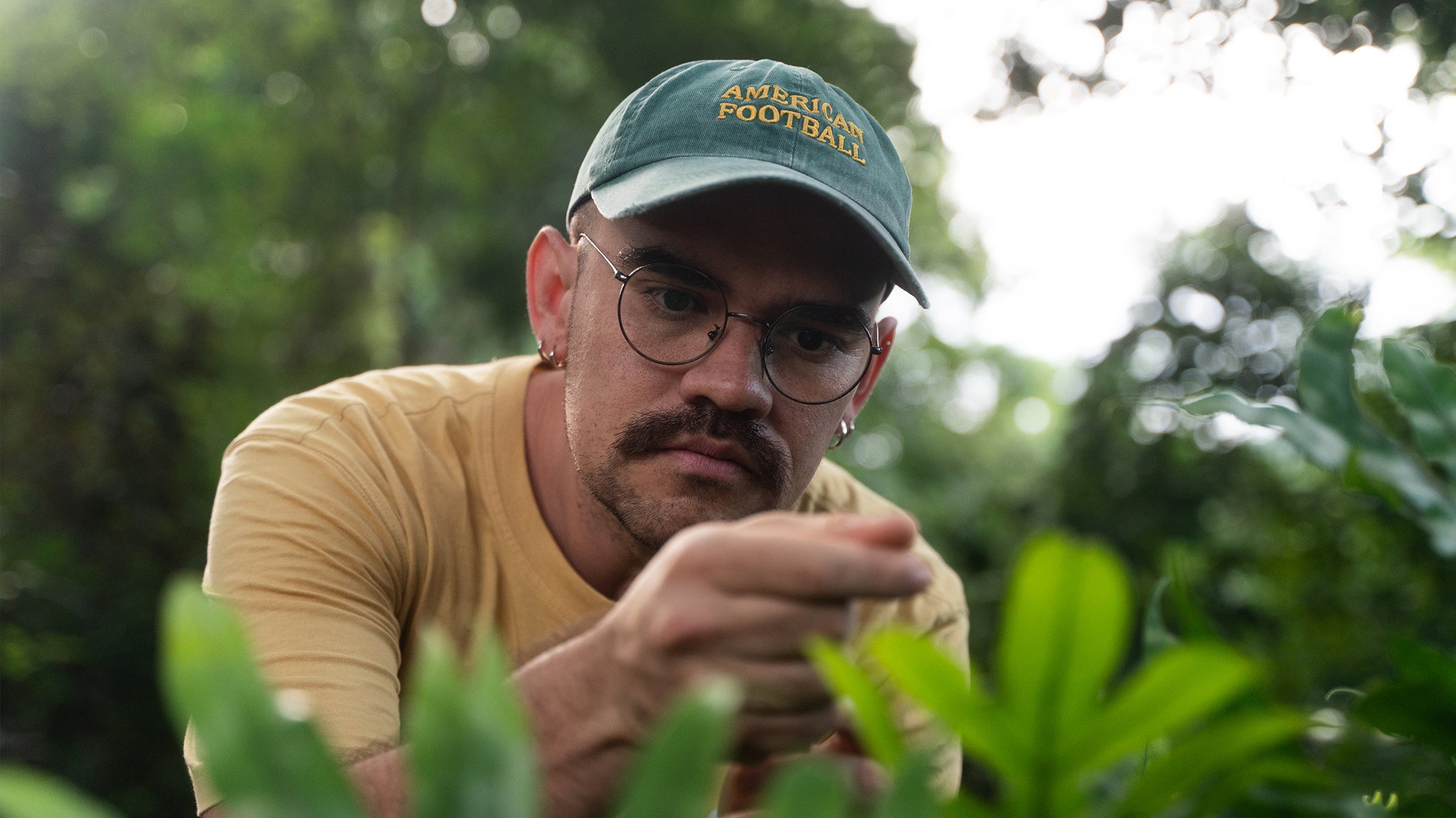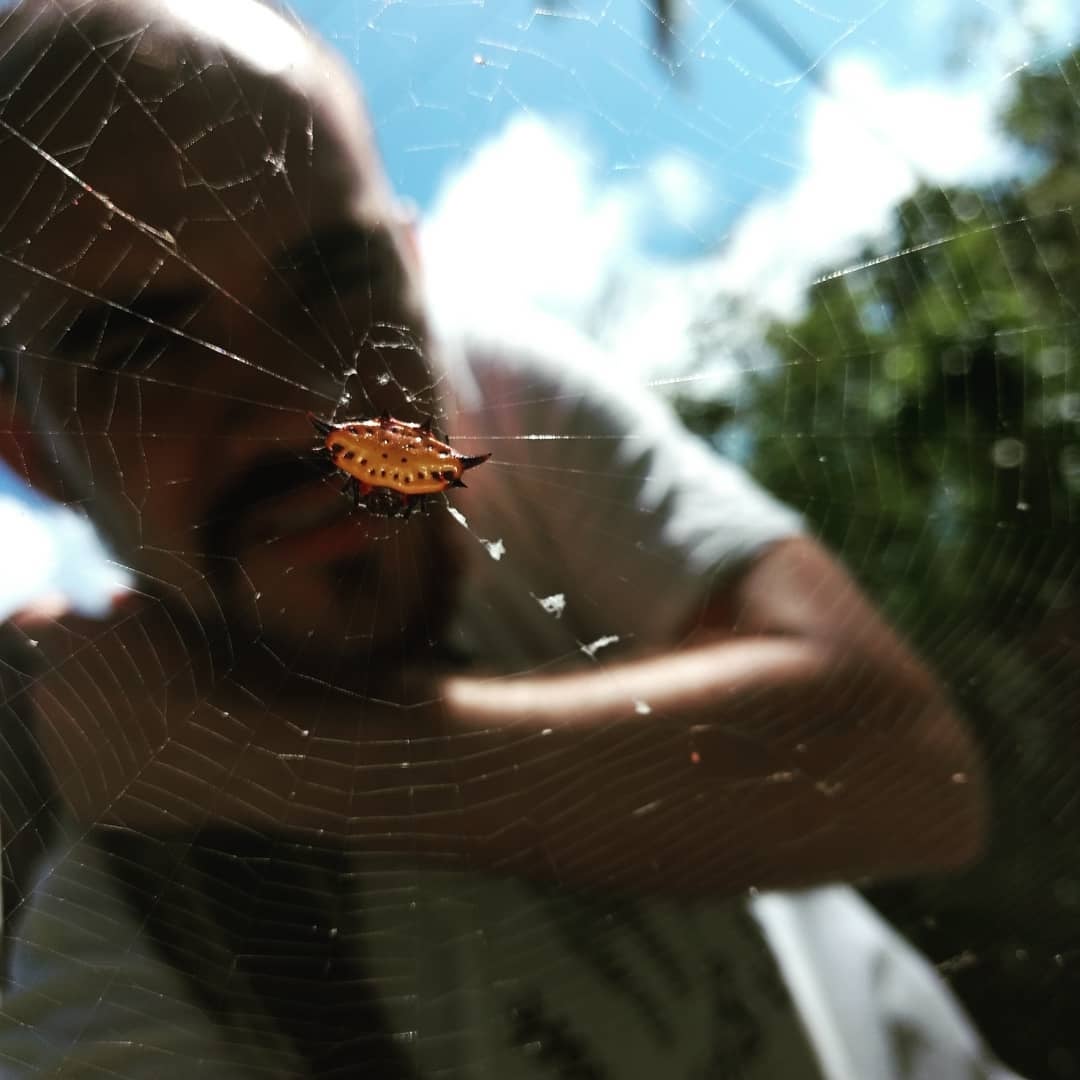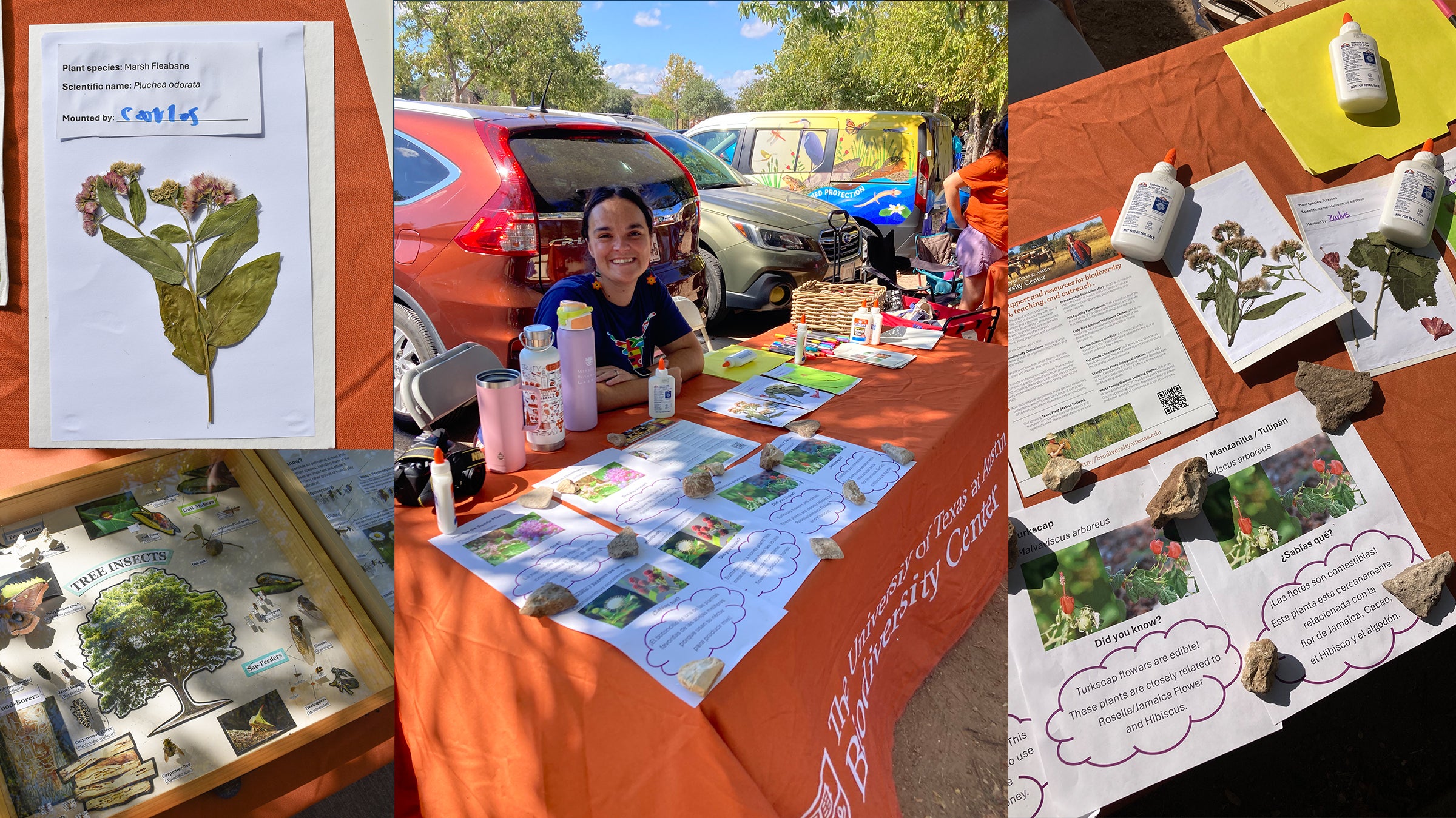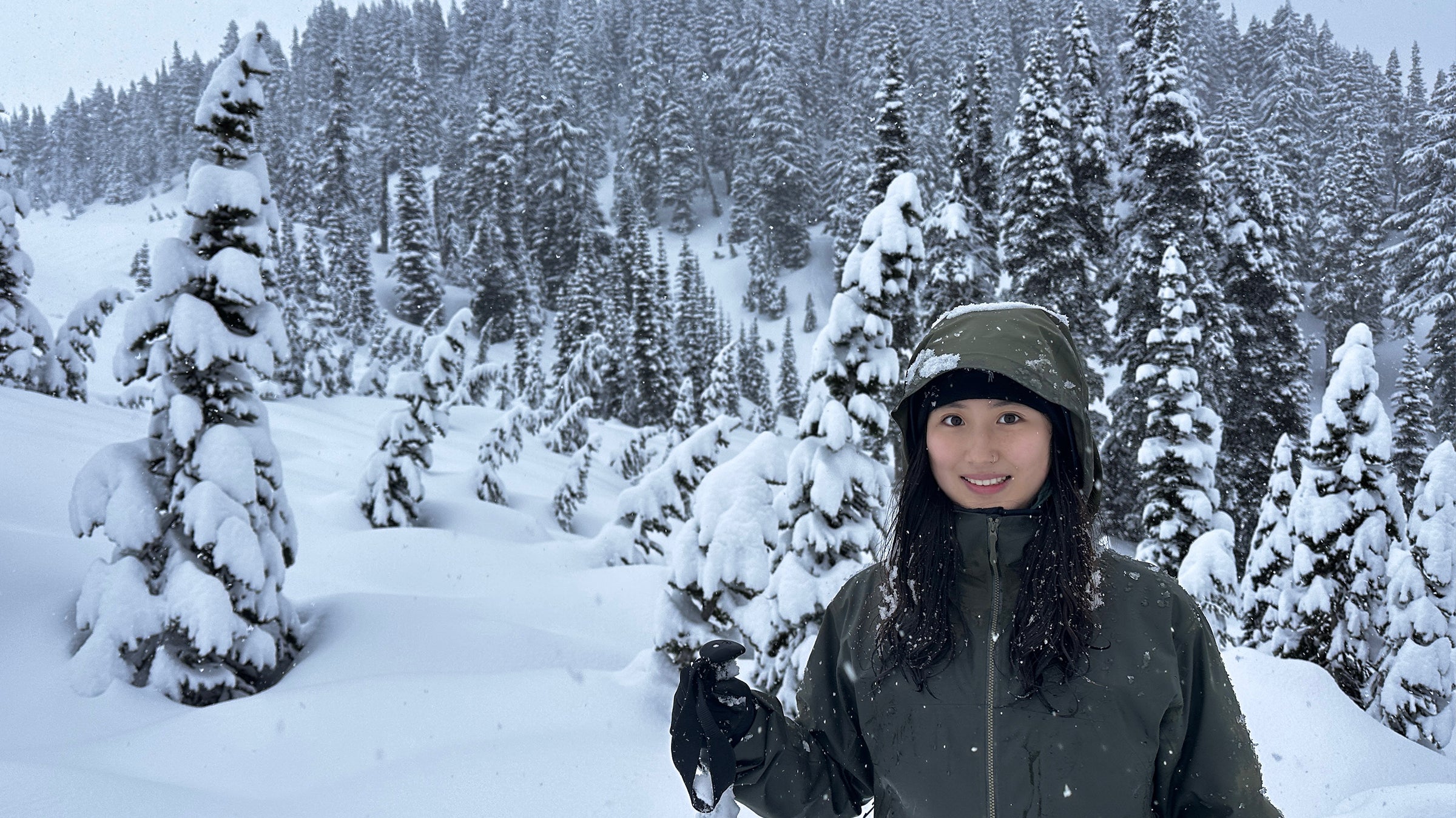
Fabian capturing orbweb spiders for observations. Picture taken by Kenneth Bahamón.
Tell us where you came from before UT, and what you studied then?
I fell in love with biology and spiders at another UT (Universidad del Tolima) in Ibagué, Colombia, where I am originally from. Right before arriving here at UT Austin, I did my Ph.D. at The University of Melbourne in Australia, where I worked with Dr. Iliana Medina and Prof. Devi Stuart-Fox exploring the function, mechanisms, and consequences of color variation in the Christmas spider. During this time, I had the privilege of traveling thousands of kilometers across southwestern and southeastern Australia, discovering that precipitation shapes the frequency and presence of discrete color phenotypes, confirming the key role that climatic factors play in shaping phenotypic diversity.
You study colorful spiders to learn about phenotypic and genetic diversity change at multiple geographic scales. Can you explain what this means and how you got interested in this?
Coloration is the quintessential 'phenotypic marker' for exploring how diversity changes over time and space, not only because it is visually attractive to humans but also because it is involved in multiple ecological roles like mate choice or predator avoidance. This topic has fascinated me since I began studying nature and recognizing the biodiversity that surrounded me in common places, like my grandmother's backyard. This interest grew when I started doing field work in different parts of South America and noticed that a single species could vary within a single population or across a continent. Since then, most of my research questions aim to disentangle what genes or ecological factors shape color variation using spiders, a fascinating system that has been largely overlooked.
Does Texas present a unique situation, challenge or benefit for your research?
Since I started working with colorful spiders, one of my research dreams has been to establish a colony of colorful spiders to perform different ecological and genetic experiments. Because my study system is widely distributed in Texas, the spinybacked orbweaver, being here offers a unique opportunity to raise these spiders in their natural conditions, implement standardized field methods in remote locations, and explore in detail their ecological preferences.

Selfie with spider in the Caribbean. The spider is the orange morph of Gasteracantha cancriformis.
How will being a Stengl-Wyer Scholar help advance your work?
One of my career goals is to establish Gasteracantha spiders as a model group to study phenotypic variation. This is a biological system I have been exploring for 10 years, describing ecological drivers of color variation and biogeography. This time as a Scholar will help me achieve this goal, allowing me to assemble for the first time the genome of one species of this genus, test in detail how different color variants inhabit heterogeneous habitats, and explore the genetic basis of coloration in divergent populations.
Where do you see your research agenda heading after UT?
After finishing my work at UT, I would like to continue exploring the mechanisms behind the variable forms of unexplored organisms. I would like to move forward in combining field experiments with genetics to understand how environmental pressures and genetic architecture interact to generate and maintain phenotypic diversity in nature. My long-term goal is to establish an independent research program that uses integrative approaches—spanning fieldwork, genomics, and experimental manipulations—to address fundamental questions about adaptation and diversification. I envision expanding this work beyond spiders to other invertebrate systems that exhibit striking color variation, ultimately contributing to our broader understanding of how biodiversity is generated and maintained across different spatial and temporal scales.



